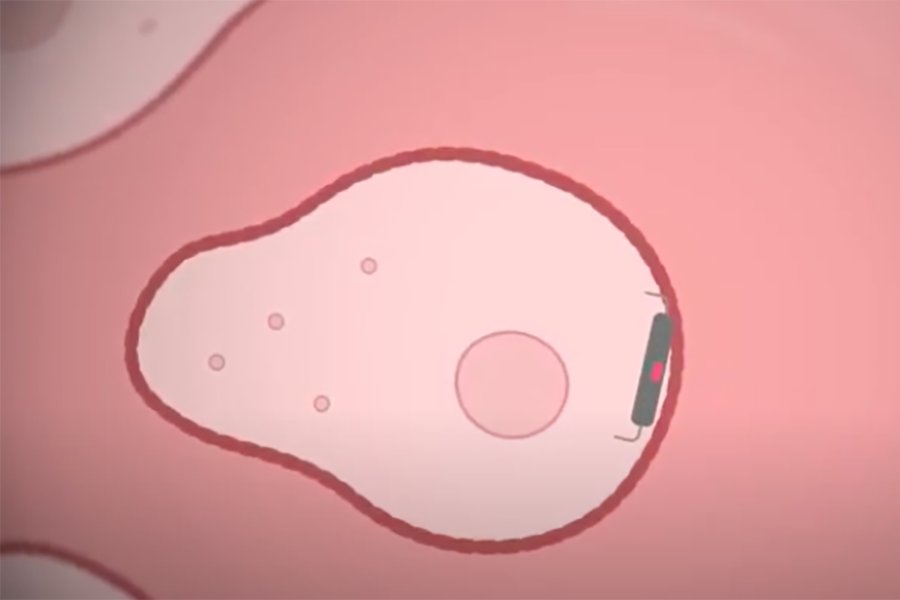
The Future of Medicine: Targeted Drug Delivery
By Krista Burns
Media Inquiries- Communications Manager
Many current medical procedures are invasive and often require lengthy patient recovery. With today’s nanotechnology, it is becoming possible to develop devices that are small enough to adhere to a human cell, creating a noninvasive medical interface.
Siyang Zheng, associate professor of biomedical engineering and electrical and computer engineering, and his lab are fabricating devices at micrometer and nanometer scale and synthesizing nanomaterials for critical medical applications.
“I believe micro and nano engineering will be critical for the advance of engineering and medicine,” said Zheng. “Many of our projects aim to solve critical medical challenges."
Cells, and macromolecules inside the cells, are the functioning units of the human body. They are measured at micrometer to nanometer in scale, respectively. Zheng is developing micro/nanotechnology that will be able to interface with human cells. For size comparison, the average human hair is about 60,000 – 100,000 nanometers wide. Developed in Carnegie Mellon’s Claire & John Bertucci Nanotechnology Laboratory and the Biomedical Engineering Collaboratory, these microdevices and materials are meant to perform non-invasive diagnoses for cancer or infectious diseases or formulate and deliver therapy drugs to targeted locations.
In one research project, Zheng’s group is developing nanomaterials to deliver therapeutic reagents into cells. “They won’t replace chemotherapy, targeted therapy, or immunotherapy,” said Zheng. “But hopefully make them work much better.”
Current cancer therapy is often a systematic treatment, meaning the drugs circulate throughout a patient’s entire body in order to impact cancerous cells. By using this innovative nanotechnology, therapeutic drugs could be inserted directly into the cancerous cells, leaving the rest of the patient’s body largely untouched by harsh drugs.
“Currently, only a small percentage of the drug actually reaches the locations it is meant to be,” said Zheng. “We want to deliver the drug to its targeted location while minimizing its off-targeting effects. While these technologies can work for different cancer types, currently we are mainly working on pancreatic cancer, lung cancer, and brain cancers.”
In another research project, his research team is developing liquid biopsy technologies for cancer diagnosis. Using a conventional read-out system, healthcare providers often fail to monitor the patient’s response to therapy during treatment or to detect cancer recurrence. While this technology will not provide a real-time diagnosis and will still require sample processing and analysis in vitro, Zheng hopes to eventually develop nanomaterial integrated microdevices for discovery and real-time diagnosis.
An interdisciplinary approach, this technology merges material devices with biomedicine. While clinical collaboration has a few challenges to overcome, like translating this research into medical practice and clinical trials, Zheng aims for such technologies to mature in 5-10 years.
This micro/nanotechnology is far-reaching. From developing biopsy technology for noninvasive cancer diagnosis to designing nanomaterials for cancer therapeutics, Zheng hopes to create a solution for many invasive medical procedures that medical professionals and patience experience every day.